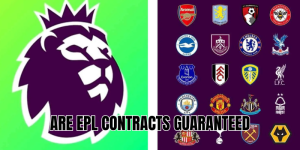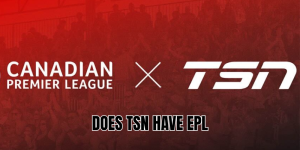In this article, HartGoal explores the burning question: does Saudi Pro League make money? The short answer is yes—but the picture is complex. The Saudi Pro League (SPL) is generating revenue through media deals, sponsorship, and commercial growth, yet costs—especially player salaries, transfers, and infrastructure—are high. Profitability is still a long game, built more on investment and ambition than sustainable surplus.
Below, HartGoal will analyze how the SPL earns, what it spends on, how it compares to other big leagues, and whether it is truly profitable now—or set to be in the future.
How the SPL Generates Revenue

Here are the primary income streams that fuel the Saudi Pro League:
Broadcasting and Media Rights
- Domestic media rights are a major piece: for the 2024/25 season, the SPL is expected to generate about $80.1 million in domestic media revenue.
- International rights are rising, though they still lag behind Europe’s top leagues. The SPL is on track to pull in approximately $100 million per season globally.
Sponsorship and Commercial Agreements
- Sponsorship deals accounted for ~$54.53 million in the 2024/25 season.
- Big title sponsorships—like the Roshn deal—are drawing attention and adding legitimacy.
- Some clubs also benefit individually: for example, Al-Nassr was expected to earn around $109.95 million from sponsorships in 2024/25.
Matchday, Merchandising, and Other Commercial Ventures
- Matchday revenues (tickets, stadium income) matter, but in many cases they are smaller relative to broadcasting or sponsorship. Attendance still needs consistent growth.
- Merchandise, brand partnerships, and digital content are being developed as additional sources.
Ownership & Investment Model
- Many top clubs are backed by the Public Investment Fund (PIF) of Saudi Arabia, which has provided deep capital injections to support star signings and infrastructure.
- There is a plan to privatize more clubs, making them more commercially driven. e Arab Weekly)
How Much Does It Spend: The Costs & Financial Pressure

Revenue is growing—but so are costs. This is what’s eating into the profits (or causing losses):
Transfer spend and wage bills
- In the summer of 2023 alone, SPL clubs spent $957 million in transfer fees—gross. Their net spend was about $907 million. That puts them second only to the English Premier League that window.
- Big salaries for marquee players come with high overheads. Clubs like Al-Hilal, Al-Nassr, Al-Ittihad are bearing massive wage bills. mesofindia.indiatimes.com)
Infrastructures, and operations
- To elevate the league’s profile, investment in stadiums, training facilities, youth academies, etc., has been heavy. These are long-term cost lines.
- Marketing, broadcasting production, logistics for international deals, and other commercial expenses are rising. Supporting global visibility isn’t cheap.
Profit & Loss realities
- Despite revenues increasing, the SPL has not yet reported consistent overall profitability for many clubs. Some operate at large losses, especially when factoring in transfer amortization and player contracts.
- Spending appears to have cooled somewhat compared to its peak, as there is recognition of the need for more sustainable financial models.
Comparison With Other Leagues

To see if SPL is making money “like the big leagues,” we need context.
- The Premier League, La Liga, Bundesliga, Serie A generate billions in media rights, sponsorship, matchday—far ahead of what SPL currently earns. Revenue.- SPL’s global media rights are rising, but still far smaller. The difference in broadcasting reach, audience size, and legacy continues to give European leagues far more stable income.
- Where SPL stands out is in its ability to spend generously, backed by state or sovereign wealth, to attract star names. But high spending doesn’t equal profit. It can boost visibility, which may lead to revenue growth, but also magnifies risk.
Is the SPL Profitable? And Will It Be?
Putting together the data: does Saudi Pro League make money? Here’s where things stand.
Current Profitability
- Some clubs may be operating closer to break-even thanks to big sponsorships, high-profile signings driving interest, and rising media and commercial income.
- But many are not yet making net profits. The cost of salaries, transfers, and operating expenses often outweigh the income, particularly for clubs without global star power or PIF backing.
Factors pushing toward profitability
- Privatization and commercialization: As more clubs are privatized, the incentive to cut waste and optimize for return increases.
- Better global media deals: If SPL can build and maintain international audience and secure higher broadcast fees, margins improve.
- Cost discipline: Recent signs show spending is being scrutinized more. Big transfer windows may be less extravagant going forward.
Challenges to profitability
- Maintaining high-profile players comes with high costs and the risk that performance doesn’t match expectations.
- Market saturation and “hype fade” are real risks: intense investment attracts attention, but sustaining it (fan engagement, consistent viewership, high ticket sales) is harder.
- International media reach is still limited, especially in Western markets, so revenue.
Key Metrics to Watch
To understand if does Saudi Pro League make money becomes “yes, sustainably,” these are critical metrics:
- Net profits or losses per club after counting amortization and depreciation
- Growth in international broadcast revenue year-over-year
- Sponsorship deal renewal values and new global partners
- Matchday revenue growth (attendance, ticket prices, fan behavior)
- Cost control, especially wage-to-revenue ratios
Conclusion
Today does Saudi Pro League make money? The answer is a cautious yes: the league is generating substantial revenue through media, sponsorship, and investment. But for many clubs, costs remain high, profitability is uneven, and reliance on state or fund-backed investment is significant.
For fans and followers, this means SPL is not just about spectacle—it’s about transformation. Growing revenues, grand signings, and a global push are real. But turning all that into consistent profit across the board is still in progress.
If you want, HartGoal can forecast when the SPL might out-earn some European leagues, or dive into the finances of individual clubs to see who’s making money and who’s burning it. Let me know what you prefer!






